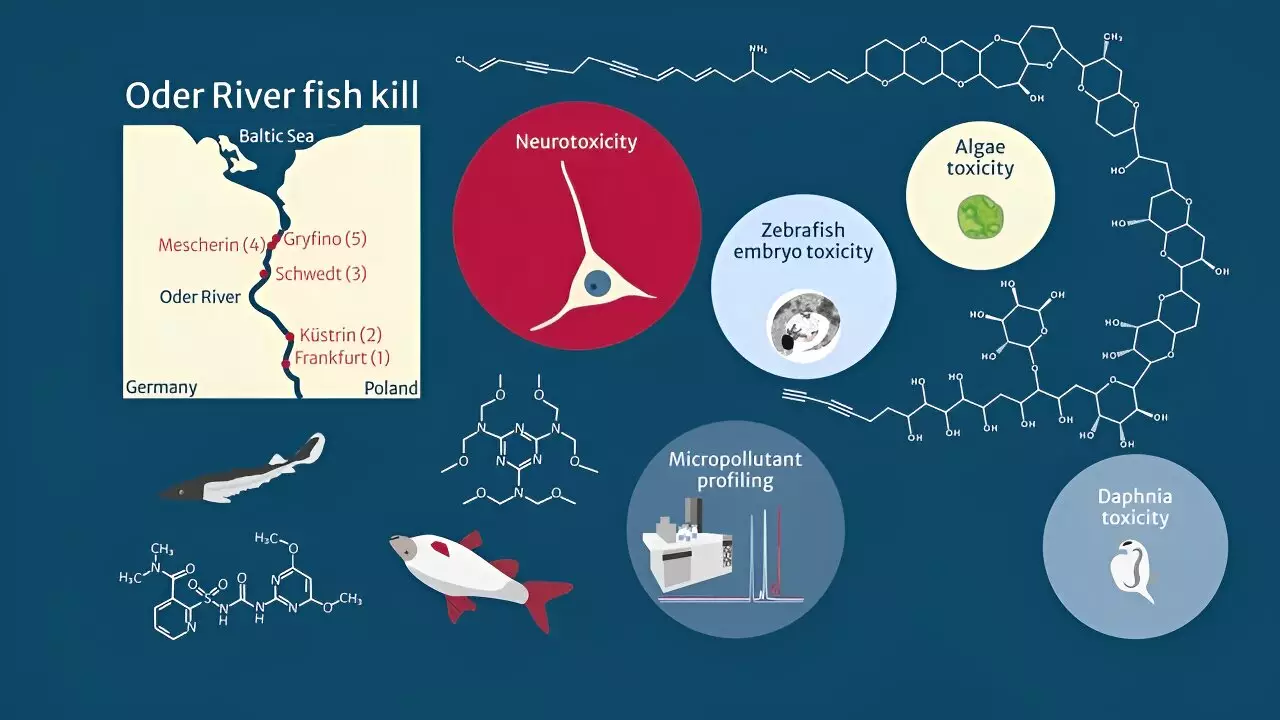The recent environmental disaster in the Oder River, located on the German-Polish border, has shed light on the devastating impact of pollution on aquatic ecosystems. A team of scientists coordinated by the Helmholtz Center for Environmental Research (UFZ) discovered a mixture of factors leading to a massive die-off of fish, mussels, and snails in the river. This catastrophe serves as a stark reminder of the urgent need to address pollution and its consequences on our waterways.
The researchers involved in the study detected over 120 organic micropollutants in water samples collected from the Oder River. While some of these pollutants, such as the flame retardant tris(1-chloro-2-propyl)phosphate, are commonly found in European rivers, others like 2,4-dichlorophenol may have originated from industrial sources. Additionally, pesticides and their degradation products were directly discharged into the water from agricultural activities. These pollutants, although present in relatively low concentrations, when combined with algal toxins, posed a significant threat to aquatic organisms.
To evaluate the extent of risk posed by the detected pollutants, the researchers used a risk quotient (RQ) analysis. The RQ is calculated by comparing the measured concentration of a pollutant with its predicted no effect concentration (PNEC). If the RQ value exceeds 1, it indicates potential harm to aquatic life. The study revealed mixture risk quotients (RQmix) ranging from 16 to 22 at the sampling sites, all of which exceeded the threshold value of 1. These findings underscore the critical danger pollutants pose to the delicate balance of aquatic ecosystems.
Laboratory experiments conducted by the research team demonstrated the adverse effects of the chemical cocktails extracted from water samples on algae, water fleas, and zebrafish embryos. Neurotoxic effects on human nerve cells were also observed during in vitro testing. The presence of prymnesins in the water extracts significantly affected the outgrowths of nerve cells and led to cell death, even at very low concentrations. While some organic micropollutants displayed neurotoxic properties at higher doses, it was evident that prymnesins were the primary contributors to the observed neurotoxic effects.
The detrimental effects of pollution on aquatic organisms in rivers like the Oder extend beyond the immediate die-off of fish and other species. The combined impact of algal toxins and micropollutants places immense pressure on the entire ecosystem, which is already under considerable stress. The researchers underscore the urgent need for comprehensive measures to mitigate pollution and protect the delicate balance of aquatic ecosystems.
The environmental disaster in the Oder River serves as a sobering reminder of the far-reaching consequences of pollution on aquatic ecosystems. The findings of the study highlight the complex interactions between pollutants and algal toxins, underscoring the urgent need for proactive measures to safeguard our waterways. By raising awareness about the devastating impact of pollution on aquatic life, we can work towards sustainable solutions to protect and preserve our precious water resources for future generations.


Leave a Reply